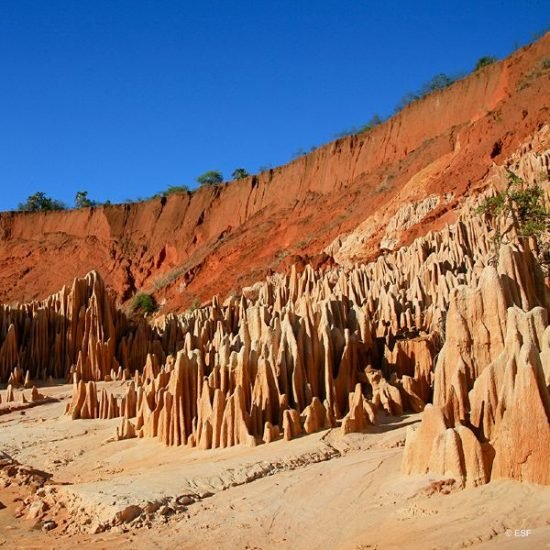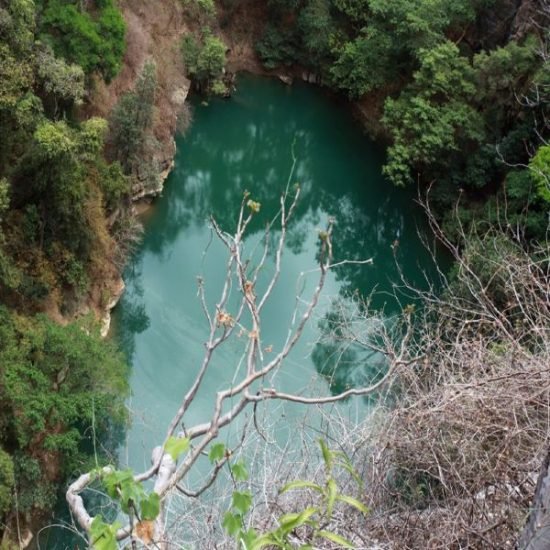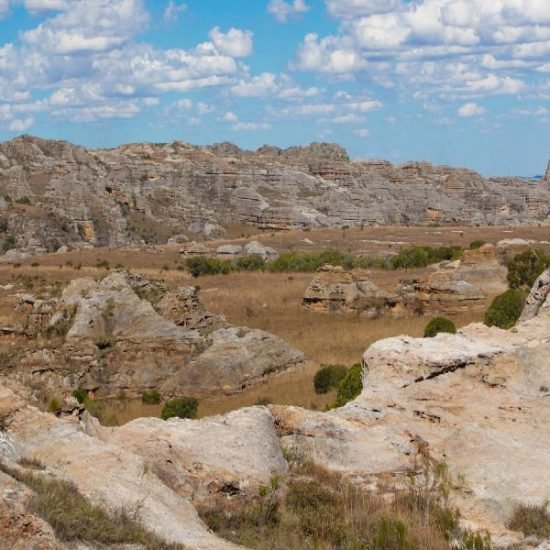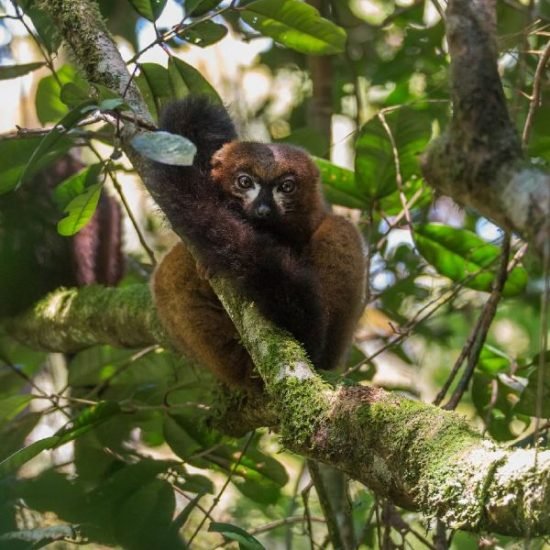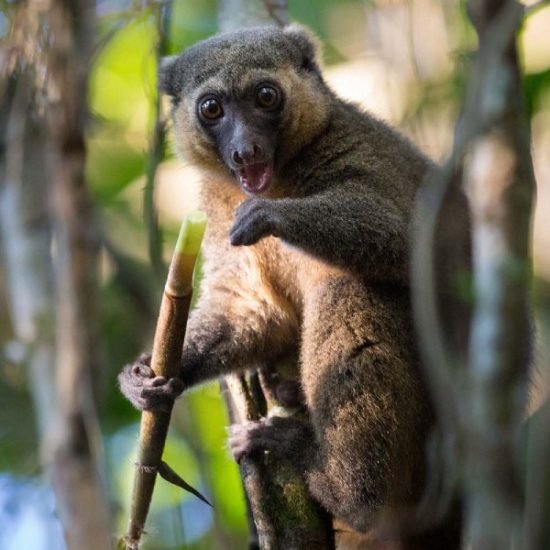Madagascar from North to South
€2500 per person
A private 20 days Itinerant tour of Madagascar from North to South, from Diego Suarez to Anakao, from the savannah landscapes of the north to the lush parks of the south, 6 uniques National Parks along the main road of Madagascar, different villages and also relaxation in dreamlike paradise beaches.
Highlights
Three Bays, Diego Suarez, Amber Mountain National Park, Ankarana National Park, Ankarafantsika National Park, Andasibe National Park, Antisrabe, Ranomafana National Park, Anja Reserve, Isalo National Park and Anakao
Departure/Arrival
Diego Suarez / Toliara
When to Go
April - December
Included
Transfers airport Toliara | Private Car Throughout The Tour with English Speaking Driver | Entry Fee of Mentioned Excursions | Hotels on Dinner and Bed and Breakfast basis
Not Included
Entry Visa (€35 pp) | Domestic Flights | Lunches | Drinks | Personal Expenses | Anything not Mentioned in Included
What to Bring
Comfortable athletic clothing, hiking shoes , hat and warm light jacket and light trench coat.
Options
Add an expert guide for €600, from day 1 to day 15
Prices per person
- 1 Traveler €4200, 1 single
- 2 Travelers €2600, 1 tw/dbl
- 3 Travelers €2000, 1 tpl
- 4 Travelers €1800, 2 tw/dbl
- 5 Travelers €1600, 1 tw/dbl + 1 tpl
- 6 Travelers €1500, 3 tw/dbl
For more options, please contact us
20 Days
1
Day 1 Ramena
In the morning we visit the French Mountain (400 mt asl), where during the French colony, military bases were built to control the entire Bay of Antsiranana. It is a steep circuit, at the end of which we can admire one of the best panoramic views that Madagascar has to offer. We will also encounter endemic plants, such as the Baobab Suarenzis, found only in this region. We will then continue to by car to Ramena to begin the exploration on foot of Orangea Reserve and the splendid Three Bays. It will be an easy 10 km circuit along the coast passing by Cap Mina and its lighthouse to finish at Sakalava Bay. We will have lunch on the go by the lighthouse. From Sakalava Bay, we will return to Ramena by car. Hotel Lakana Beach Resort or similar.
2
Day 2 Ramena - Joffreville - Ramena 100 km, 2 hours' drive
The morning will be dedicated to visit Amber Mountain National Park. By car we reach Joffreville in about 1 hour, the entrace to the park. Joffreville, a small characteristic colonial village, where time stopped in the 1960s. Old military hangars and beautiful old Creole style villas make of Joffreville the favouirte destination for the french military during colonial time. The park, a rainforest comprising six volcanic lakes and three waterfalls, is a paradise for many endemic animals and plants. Located more than 1400 m above sea level, the Montagne d’Ambre National Park offers spectacular views on clear days. You will also notice a difference in temperatures of up to 10 degrees from the surrounding areas. We will travel a circuit between ups and downs of approx. 4 hours among hundreds of endemic plants and trees. Free afternoon on the beach. Hotel Lakana Beach Resort or similar.
3
Day 3 Ramena
After breakfast on foot we reach the pier of Ramena to board a small fishing boat to reach the Emerald Sea, Suarez Island. We will navigate through the inlet of bay of Antsiranana and the Indian Ocean, and the crossing will last approximately 45 minutes, depending on the winds. We will spend the day by the beach and enjoy a fantastic seafood lunch. The return is scheduled for 3 in the afternoon to take advantage of the favorable winds, the sea at this time of the day is rougher than in the morning. Hotel Lakana Beach Resort or similar.
4
Day 4 Ramena - Red Tsingy - Ankarana East 140 km, 5 hours'
Today we begin the long journey to Toulear, 2200 km of good and bad roads, amazing landscapes ranging from the desert to the humid tropical forest. An hour and a half from Diego Suarez, 10 km from the main road, we find the Red Tsingy, a natural spectacle caused by soil erosion. After an hour visite we continue south to our nex stop, Mahamasina, by the entrance of Ankarana National Park. This park is characterized by a complex of limestone rocky pinnacles, called Tsingy, formed by the erosion caused by rich waterways; patches of dense tropical jungle; strips of deciduous forest, deep caves and canyons. Arrival is expected by noon, on time for a short lunch break and a 2/3 hours' hike in the park. Hotel Relais Ankarana or similar.
5
Day 5 Ankarana East - Antsohihy 320 km, 6 hours' drive
We will continue visiting the park in the morning, expect a 3/4 hours' hike before we travel south to Antsohihy for a long leg, from the savannah near Ambilobe, to the tropical plantation of Ambanja, to finish in the torrid Antsohihy. We will be in Antsohihy by early evening. Hotel Bellevue or similar.
6
Day 6 Antsohihy - Ankarafantsika 320 km, 8 hours' drive
We will spend the whole day reaching Ampijoroa, by the entrance of the National Park of Ankarafantsika. Upon arrival, after sunset, we walk by the park entrance in search of nocturnal lemurs and more wildlife. Hotel Gite d'Ampijoroa or similar.
7
Day 7 Ampijoroa
Day dedicated to visiting the Ankarafantsika National Park. The park is a mosaic of dense evergreen forest and dry deciduous forest, populated with different kinds of lemurs, half of the 260 species of birds of Madagascar, chameleons, iguanas and more wildlife. On foot we reach the large natural canyon between the deciduous forest and the savannah to finish near Lake Ravelobe where the vegetation is more lush with spectacular giant baobabs. Hotel Gite d'Ampijoroa or similar.
8
Day 8 Ampijoroa - Antananarivo 470 km, 8 hours' drive
We will spend the whole day traveling to Antananarivo. Hotel Belvedere or similar.
9
Day 9 Antananarivo - Andasibe 140 km, 4 hours' drive
Meet and greet at your hotel after breakfast and we depart east to our first stop, Andasibe. In about 2 hours we stop at the Private reserve of Peyrieras where we can admire beautiful butterflies, chameleons and other insects to the amazing appearance, all endemic to Madagascar. We then continue towards Andasibe, just another hour away. Upon arrival, we will visit Mitsinjo Private reserve, where the locals have been able to recover part of the old primary forest through conservation programs and reforestation of endemic trees and plants. Part of what is now Mitsinjo Reserve, used to be part of slash and burn agricultural land.The reserve is also work for over 40 people. After dark we will walk the perimeter of the Park of Andasibe looking for nocturnal lemurs. Hotel Feony Ala or similar.
10
Day 10 Andasibe
A true paradise for nature lovers, Andasibe Mantadia National Park enjoys a rich and incredible flora and fauna. Hopefully we will see some of the 14 species of lemurs, 51 species of reptiles and 84 species of amphibian. Among the lemurs we will probably see and hear the biggest of all, the indri, then with some effort we Should see the black and white ruffed lemur and the sifaka diademed to mention a few. With a little bit of luck we will also see some chameleons. The hike is not too difficult but expect mud and mosquitoes and will last approximately 4/5 hours. The afternoon, we will visit Vakona Reserve where we will have the chance to see different species of lemurs from very close range. Hotel Lemurs Lodge or similar.
11
Day 11 Andasibe - Antsirabe 320 km, 4 hours' drive
Long traveling day ahead, we will head south of Antananarivo to get to Antsirabe, seven hours away. We will drive through typical highlands villages and rice fields. The RN 7 is incredibly beautiful and authentic, Madagascar at its best. We will pass cars and trucks that in States would not even be considered worthy of a wreck yard, souvenir vendors, barnyard animals feeding just by the side of the road, cyclists and much more. Five hours into our drive, and we should be in Ambatolampy, where we will stop to visit a foundry that produce kitchen utensils. By 3 in the afternoon, we arrive in Antsirabe, for a short visit of the large local market of Tsara Sabotsy. Hotel Plumeria or similar.
12
Day 12 Antsirabe - Tritriva - Ambositra 120 km, 4 hours' drive
In the morning we will take the scenic drive and a short hike to Lake Titriva, a beautiful lake that fills the extinct crater of a volcanic cone surrounded by majestic metamorphic cliffs. After Tritriva we continue with our journey along the RN7, Ambositra is our next stop, a 3 hours' drive from Lake Tritriva. In Ambositra we will visit the old Royal Palace and learn more about the history of the Betsileo people and this area. Hotel Artisan or similar.
13
Day 13 Ambositra - Ranomafana 140 km, 4 hours' drive
We leave Ambositra in the morning to reach Ranomafana and it will be a scenic drive. By lunch we are in Ranomafana. We will visit the Arboretum of Ranomafana, an old degraded site now dedicated to the conservation of more than 200 species of tropical endemic trees. After the Arboretum we will visit the village of Ranomafana. Hotel Grenat Hotel or similar.
14
Day 14 Ranomafana – Ambalavao 120 km, 3 hours' drive
Today in the morning before it is too hot, we will take a sightseeing hike in Ranomafana National Park, one of the most beautiful Rainforests in the World. The Park of Ranomafana is known for its wildlife albeit some of it, is very tricky to see. Let's mention the lemurs, the endemic golden bamboo lemur, the black and white ruffed lemur and the Milne Edward's sifaka just to mention few. Many reptiles and amphibians can be seen in this lush environment during the hikes. Birdlife is also extraordinary, however the thick vegetation makes a large number of the winged creatures difficult to see. Noteworthy the flora with an incredible numbers of endemic plants and trees that can be seen visiting Ranomafana. After our hike and lunch, we will head south to Ambalavao, a large subtropical town in east-central Madagascar. If on time, we will visit the Antaimoro Paper factory. This papyrus type paper, made from the bark of a tree called avoha, is impregnated with dried flowers and sold into such items as wall hangings and lampshade. Hotel Aux Bougainvilliers or similar.
15
Day 15 Ambalavao - Ranohira 230 km, 3 hours' drive
About 10 km south of Ambalavao, we will visit the Anja Community Reserve, a gorgeous 30 ha. wonderland. Designated a protected reserve in 1999, this fascinating park has breathtaking views, beautiful plant life and hosts more than 300 not camera-shy ring tailed lemurs. Here in Anja, nature and humans coexist and flourish. After our visit to Anja Reserve, we will drive to Ranohira. We should arrive in Ranohira by lunch. After our lunch break we will visit a typical bara village, learn more about their habits and believes. Hotel Isalo Ranch or similar.
16
Day 16 Ranohira
Today, another breathtaking National Park of Madagascar. The National Park of Isalo is truly a unique park with incredibly diverse landscapes, including prairie-like grasslands, mountains, deep canyons and tropical oases with picturesque waterfalls dropping into inviting pools. You may consider taking a dip after a long hike, here temperatures can easily reach 30 degrees Celsius before midday. Wear good walking shoes and bring plenty of water. Before sunset we will head to the famous Window of Isalo, a rock formation for one of the best sunset photo opportunities of the tour. Hotel Isalo Ranch or simil
17
Day 17/19 Ranohira - Toliara - Anakao 230 km, 4 hours' drive
Very early depart, by 5 AM we should be moving to be in Toliara by 9AM. In Toliara we board the direct ferry to Anakao. Arrival before midday. In Anakao we will spend the next 3 nights. Possible activities not included in the price in Anakao: Nosy Ve, a small island in front (4 km) of Anakao. Nosy Ve is a sacred place for the Vezo people, where locals sacrifice zebu as a gift to their ancestors every year. The island is also home to a herd of red-tailed tropical birds, which attracts many bird watchers from all over the world. Endemic birds sightings, beautiful white sandy beaches and excellent snorkelling. We also suggest the magnificent Tsimanampetsotsa National Park, a place that attracts more scientists than tourists because of the very high endemicity index that goes over 75%. There are also baobabs over 1000 years old, pachypodium, banyan trees with parrots, turtles, lemurs and especially from April to October pink flamingos in the blue salty lake (saturated sulphate). Another sea excursion could be Nosy Satrana, an uninhabited island. The excursion could be done in a traditional motor boat or in a rowing canoe. The journey consists of walking along the coast through the transparent lagoon furrowed by Vezo canoes. During low tide, the island is very close to the shore, herds of di zebu come looking for their food. In season (June to September), whale watching is also a great activity not to miss in Anakao. Hotel Safari Vezo or similar.
18
Day 20 Anakao - Toliara
The ferry to Toliara from Anakao will leave at 7AM to be in Toliara by 8AM. From the port, transfert to the airport of Toliara. Ends of our services.


